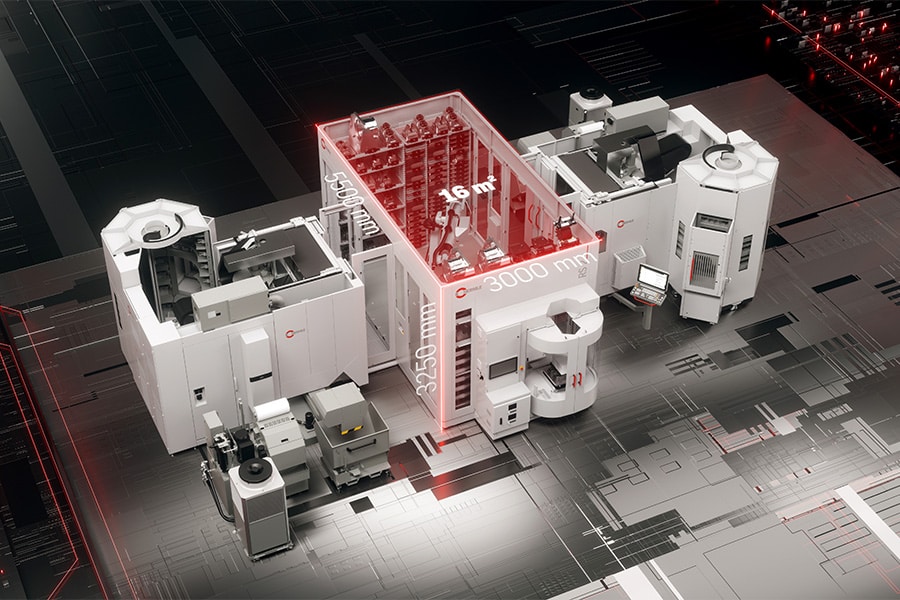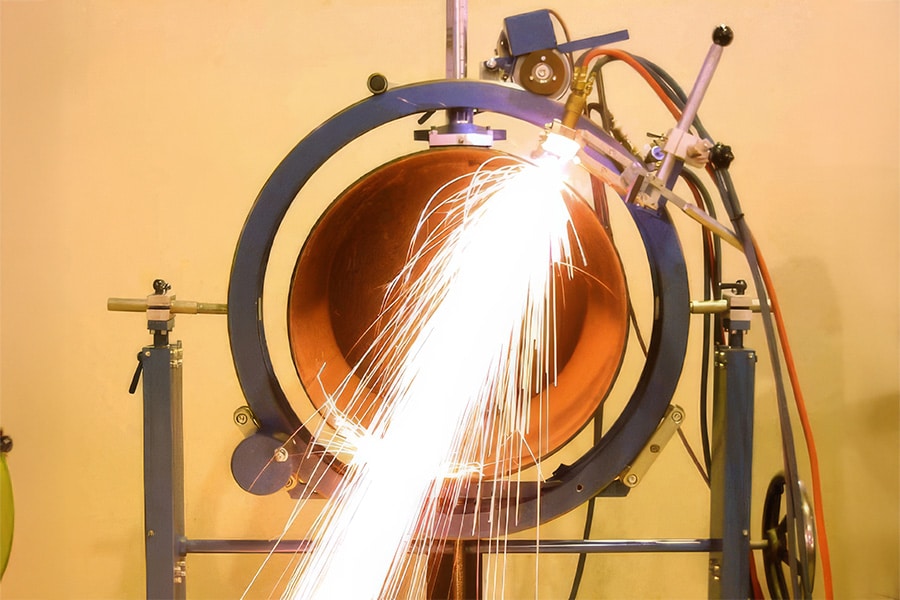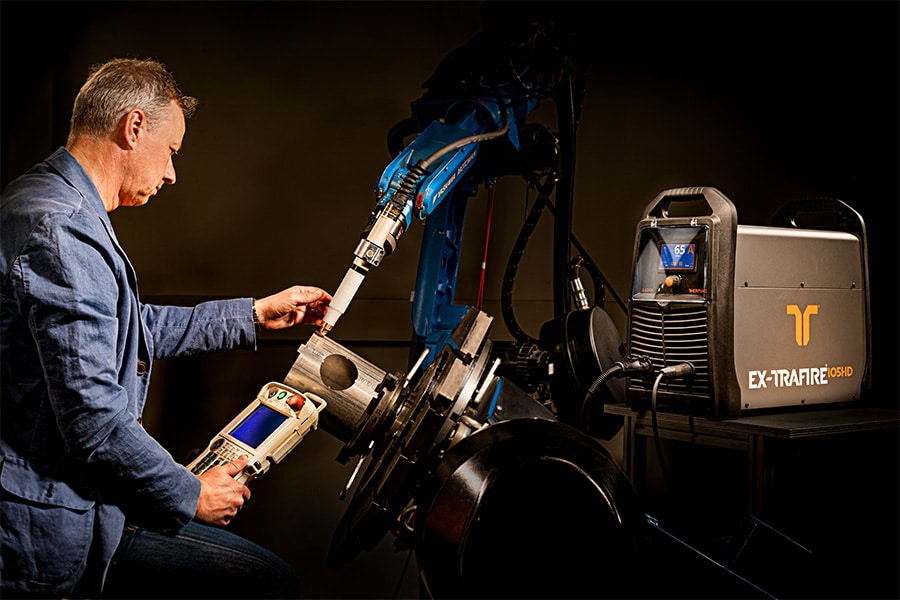
Folding robots provide 30% more capacity and extra competitiveness
Automation can also serve people. That's what they believe at De Kimpe. The company from Zingem recently invested in two bending robots. These should not only enable a growth in capacity and allow the company to produce more cost-effectively, but they should also relieve the burden on employees. The burdensome, repetitive work can now be confidently entrusted to Amada's bending robots.
In just a few generations, De Kimpe established an excellent name in Zingem and the surrounding area. More than a decade ago, that also caught the attention of the group behind Gondella from Eke, an international manufacturer of store shelving. They saw the benefits to their own products of the mastery in sheet metal working built up there. Says plant manager Carl Maes, "Today we work for 50% for Gondella and then supply metal pieces for a very diverse portfolio of customers. One of our specializations is facade panels that give buildings individual character. Until recently, we delivered products as semi-finished products. But we want to evolve into a one-stop shop for our customers, where we can also relieve them in terms of painting, assembly and mounting." Annually, De Kimpe processes some 2,000 tons of material.
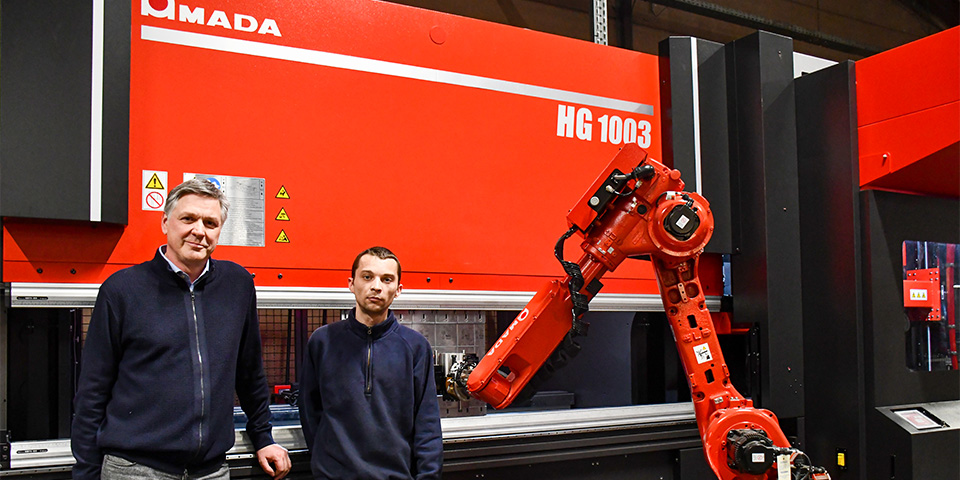
Plant manager Carl Maes (left): "It is clear that our employees feel relieved and have gained more breathing room with the arrival of the Amada folding robots."
Creating more capacity
With three engineers already on staff, De Kimpe is serious about doing more than laser cutting, bending and welding. Customers are supported from A to Z to realize projects. So there is no lack of ambition at De Kimpe. In the coming years, the company wants to increase its turnover of 4 million euros through more subcontracting activities. But growing requires more capacity. "In that respect, we believe hard in automation," Maes points out. "Not to replace people but to take over the burdensome, repetitive tasks, leaving their hands free for flexible and more challenging work. Since the bottleneck was our bending department, we needed to be able to increase capacity there by 30%. Two bending robots from Amada should make that possible."
Experience in folding cells is the deciding factor
The group did not take the decision overnight. "We carefully explored the market to find a partner that could best realize our needs. Amada is a big name in the folding world. That already instilled a lot of confidence," indicates Maes. Moreover, it was clear that they already had the necessary experience to bring such projects to a successful conclusion. "On a technical level, the tool changes and the intelligence of the machine to correct itself where necessary stood out. For us, it was important to be able to reliably run series of 50 to 5,000 pieces on it and become a bit more competitive in this. On top of that, for very complex pieces, we can now guarantee consistent quality for every fold."
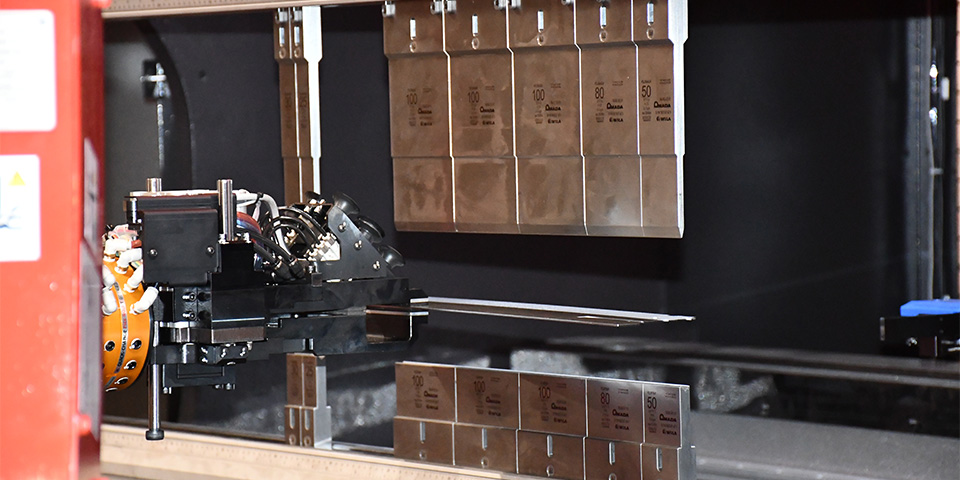
The HG ARS bending cell consists of a seven-axis robot, a servo-hydraulic bending bench (100 tons at 3 m, drop speed 220 mm/s and bending speed 20 mm/s) equipped with a standard angle measurement system, nine grippers with automatic changeover and 12 m of bending dies and 15 m of bending dies with automatic tool change ATC.
Smooth implementation
The small EG AR folding cell is suitable for pieces of 300 x 300 mm unfolded, while the larger work (1,000 x 800 mm) is done on the HG ARS folding cell. Maes: "For that choice, we could count on Amada's expertise. Based on the pieces we produce today, we selected in close consultation the right bending machines for the job." They made their entrance on the shop floor in July and September and were positively welcomed by the staff. "It is clear that our employees feel relieved and have gained more breathing space because of it." Accordingly, Maes looks back on the investment with particular satisfaction. "It is clear that such machines involve a learning curve. Our programmers and operators now have to master the tips & tricks so that the set-up for a series can be a lot smoother. But in the meantime, the robots already have their hands full."
